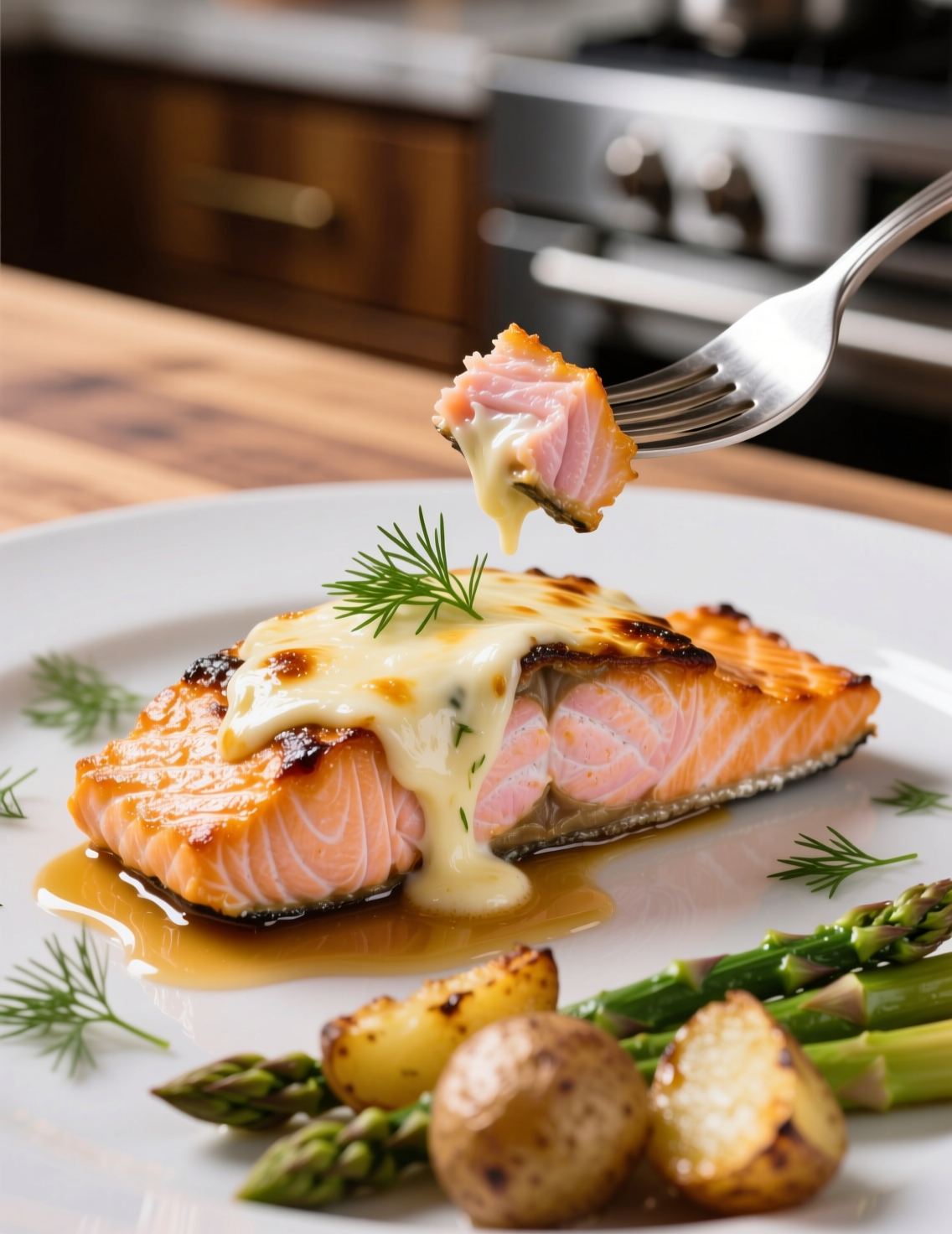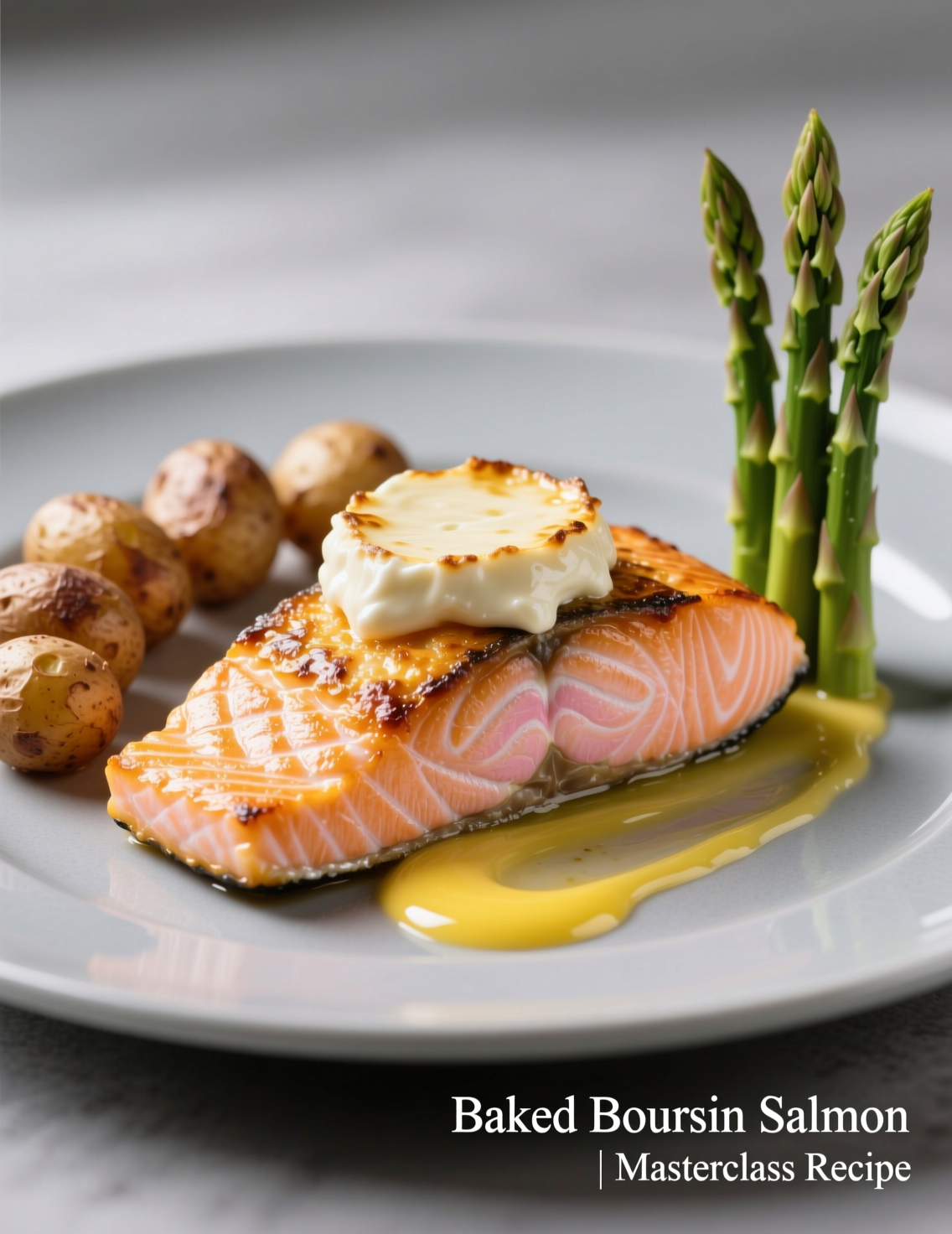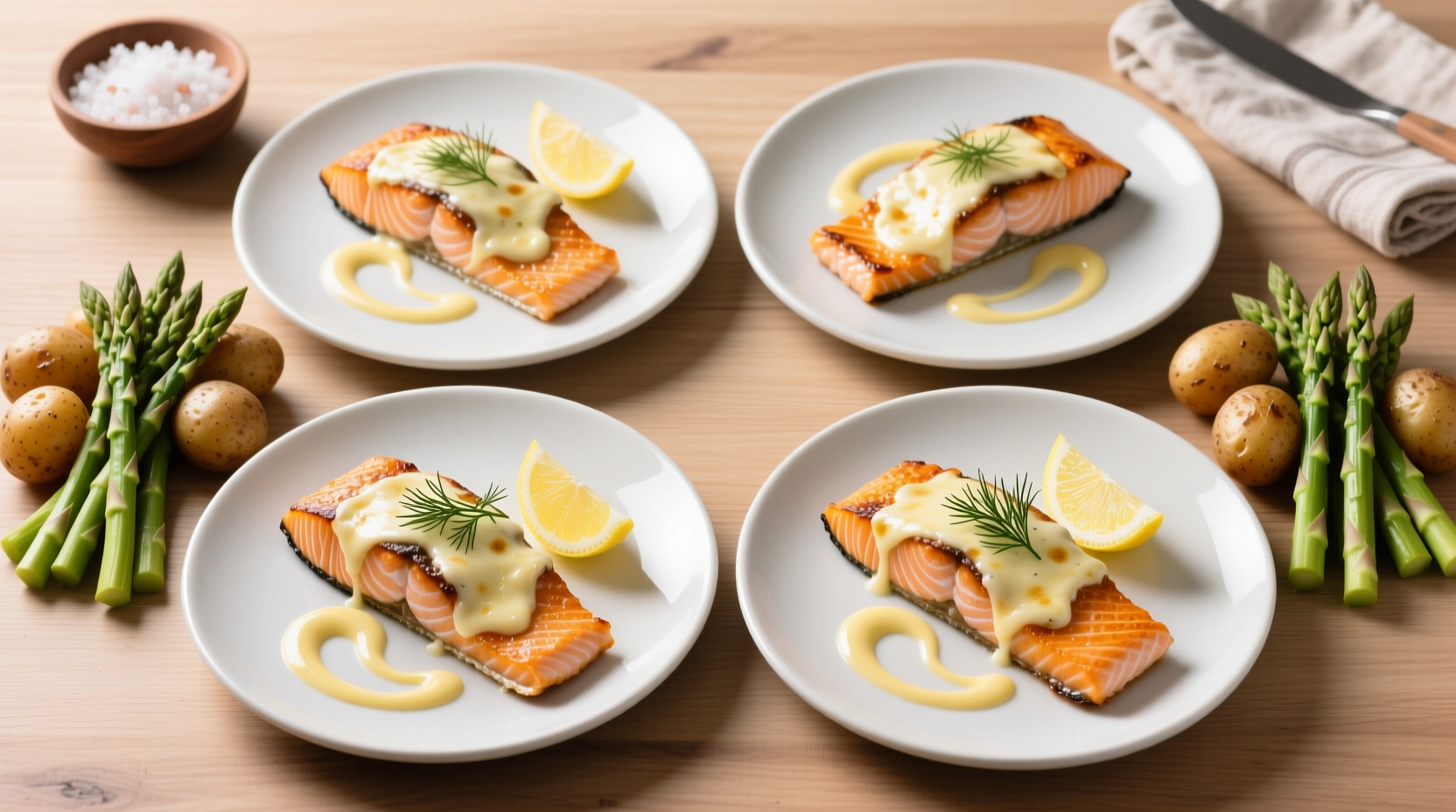Salmon is one of those ingredients that never really leaves the conversation of fine cooking. It’s rich in omega-3s, naturally buttery, and versatile enough to suit almost every cuisine. But here’s the twist—pair it with Boursin cheese and suddenly you’ve got a baked dish that manages to be both sophisticated and ridiculously comforting at the same time. This isn’t just another salmon recipe floating around the internet. It’s a deliberate balance of French-inspired cheese richness and precise salmon handling. Today, let’s break down how to make a baked Boursin salmon for four servings, in a way that’ll impress even the fussiest palate.
Why Salmon and Boursin Belong Together
Salmon is a fatty fish, but in the good way—the kind of fat that chefs dream about because it carries flavors so well. Boursin, on the other hand, is that herbed, garlicky, creamy cheese that seems simple but hides a clever balance of seasonings. When the two meet in the oven, you get melt-in-your-mouth salmon that’s almost self-saucing.
Professional chefs often look for ingredients that can work hard in more than one direction. Boursin doesn’t just flavor the salmon; it also protects the flesh from overcooking. This dual function is why the pairing makes sense beyond just taste. It’s technique hiding inside indulgence.
Choosing the Right Salmon
Here’s where many home cooks get it wrong—they think any salmon fillet will do. Professionals know that not all salmon is equal. Atlantic salmon, which is mostly farmed, tends to have a softer texture and higher fat content. Wild-caught species like Sockeye or King carry more complex flavor but can dry out faster in high-heat cooking.
For this recipe, a mid-fatty option works best. You don’t want something too oily, because Boursin will already bring richness. Nor do you want overly lean cuts that’ll choke under the cheese’s creaminess. If you can get your hands on sustainably farmed Norwegian salmon, that’s your sweet spot.
Thickness matters too. Aim for fillets around 1 to 1.5 inches thick. Thinner cuts cook unevenly and dry fast.
The Role of Boursin in Culinary Science
Boursin cheese is often dismissed as a “party cheese,” but let’s cut the nonsense. This spreadable cheese, originally from Normandy, has the perfect water-to-fat ratio for baked applications. Garlic and fine herbs are the most common variety, though there’s also shallot & chive, black pepper, and cranberry versions. For baked salmon, garlic and herb is king.
When baked, the Boursin doesn’t melt into nothingness. It softens, runs slightly, and creates a creamy sauce that bastes the fish underneath. Think of it as an edible barrier between the oven’s dry heat and salmon’s delicate protein strands. This barrier delays albumin leakage—that unpleasant white coagulated protein that ruins presentation.

Preparing the Salmon Correctly
It sounds simple: season the salmon, spread Boursin, bake. But pros don’t wing it. They prepare.
First step, bring the fish close to room temp before cooking. Ice-cold fish straight into a hot oven will contract too quickly, leading to uneven cooking. Pat it bone-dry with paper towels. Moisture on the surface will steam, and steamed salmon tastes nothing like baked salmon.
Salt the fish at least 15 minutes before baking. This isn’t just about flavor—it allows the salt to start denaturing proteins, making the flesh firmer and juicier. A light brush of olive oil helps the Boursin spread evenly and keeps the skin side (if on) from sticking.
The Professional Recipe Breakdown
Servings: 4
Cooking Time: 25 minutes
Difficulty: Moderate, but manageable if you respect the process
Ingredients:
- 4 salmon fillets, 6 oz each, skin-on or off depending on preference
- 1 package (150g) Boursin Garlic & Fine Herbs cheese
- 2 tbsp olive oil, extra virgin
- Juice of half a lemon
- Zest of 1 lemon
- 1 tbsp fresh dill, chopped (plus extra for garnish)
- 1 tsp black pepper, freshly cracked
- Pinch of sea salt (remember, Boursin has salt too)
- Optional: ½ cup cherry tomatoes or asparagus spears for roasting alongside
Method:
- Preheat oven to 400°F (200°C). Line a baking tray with parchment.
- Pat salmon dry and season lightly with salt and pepper. Rest for 10 minutes.
- In a small bowl, mix Boursin with lemon zest, half the dill, and olive oil until smooth. This helps spreadability and layers flavor.
- Place salmon fillets on tray, skin-side down if skin is intact.
- Spread the Boursin mixture generously over the top of each fillet.
- Roast in oven for 14–16 minutes, depending on thickness. Internal temp should hit 125°F (51°C) for medium-rare.
- Remove, rest 5 minutes, squeeze fresh lemon juice over, and garnish with dill.
What you’ll notice is the Boursin forms a golden crust while the salmon inside stays moist. The cheese doesn’t overpower—it becomes part of the fish.
Why Temperature Control Matters
This dish is all about balance. Overcook the salmon and you’re left with dryness even the creamiest Boursin can’t save. Undercook it, and you risk unpleasant translucency in the center.
Professionals swear by instant-read thermometers. At 120–125°F, salmon hits its prime. Proteins are set, oils are rendered, and the texture is tender yet flaky. Carryover heat will finish the job after you pull it from the oven.
In restaurant kitchens, salmon often gets baked at higher temps (425–450°F) for speed, but in a home or test kitchen, 400°F offers more forgiveness.
Side Pairings That Make Sense
You don’t throw a heavy side at a dish that already leans rich. Steamed asparagus with lemon, roasted cherry tomatoes, or a wild rice pilaf balance the fat. Even something as humble as buttered green beans with toasted almonds works.
A professional trick: roast vegetables on the same tray. They’ll catch drips of Boursin and salmon oils, gaining depth of flavor. It’s like a bonus sauce without extra effort.
Common Mistakes to Avoid
One mistake? Slapping cold Boursin straight from the fridge onto the fish. It’ll clump, and instead of a smooth crust, you’ll get uneven pockets. Always soften it first.
Another? Baking too long because “fish should flake easily.” That phrase has ruined more salmon than it’s helped. Flaking happens at doneness, but also beyond. Learn to pull it earlier.
Also, don’t drown the salmon in cheese. You want balance. Too much Boursin masks the salmon’s natural character.
Nutritional Insights
Each 6-ounce portion of salmon with Boursin comes in around 450–500 calories, depending on sides. Salmon alone is rich in EPA and DHA omega-3s, around 1.5–2 grams per serving. Boursin, while indulgent, adds calcium and protein.
For professionals, note that this dish straddles indulgence and wellness. It feels luxurious, but it’s still healthier than many cream-based fish recipes. Clients often appreciate when chefs can balance nutrition with decadence.
Cultural Context and Trends
Cheese on fish has always been controversial in culinary circles. The old Italian rule “no cheese with fish” was about maintaining clarity of delicate flavors. But modern dining bends those traditions. Nordic and French approaches prove dairy and fish can marry beautifully when balance is respected.
Boursin salmon recipes have surged online, especially on TikTok and Instagram, where visuals drive cooking choices. The golden crust photographs well. But in professional kitchens, it’s the science behind the pairing that makes it worthy.

Wine Pairing and Professional Service
No fine salmon dish is complete without proper pairing. A crisp Sauvignon Blanc, with its acidity and herbaceous notes, cuts right through the richness. If you’re leaning French, a Sancerre is impeccable.
Red wine with salmon isn’t taboo either. A light Pinot Noir works surprisingly well, offering earthy tones against the creamy topping. Professionals know it’s about mouthfeel harmony, not just flavor notes.
Final Thoughts and Takeaways
Baked Boursin salmon isn’t about throwing a trendy cheese on a fish and calling it a recipe. It’s about understanding how fat, protein, and aromatics interact under heat. It’s a dish that teaches restraint—just enough richness, just enough seasoning, and precise cooking.
For four servings, this recipe delivers both elegance and practicality. It’s accessible for a home cook but polished enough for a restaurant pre-fixe. The key lies in preparation, respect for ingredients, and temperature control.
If you’re a professional, this dish offers a platform to explore cheese-fish pairings beyond the obvious. If you’re cooking at home, it’s an easy way to feel like you’ve made something special without chaos. Either way, once you taste that creamy-herb crust giving way to buttery salmon, you’ll know why the pairing works.
FAQs
Can I use a different cheese instead of Boursin?
Yes, you can swap with cream cheese mixed with herbs, but Boursin gives the best flavor balance.
Should I remove the salmon skin before baking?
It’s optional; skin helps retain moisture, but if you dislike it, remove before cooking.
How long should I bake salmon with Boursin?
Usually 14–16 minutes at 400°F, depending on the thickness of your fillets.
What type of salmon works best for this recipe?
Sustainably farmed Norwegian or mid-fatty fillets are ideal for balance.
Can I prepare Boursin salmon ahead of time?
Yes, you can assemble it earlier and refrigerate, but bake just before serving.
Is Boursin salmon healthy?
Yes, it’s rich in protein and omega-3s, though Boursin adds extra fat and calories.
What sides pair well with Boursin salmon?
Light sides like asparagus, green beans, or wild rice balance the richness perfectly.
How do I stop salmon from drying out in the oven?
Use an instant-read thermometer and pull it at 125°F for medium-rare.
Can I freeze baked Boursin salmon?
Not recommended, as the texture of both salmon and Boursin suffers after freezing.
Which wine pairs best with baked Boursin salmon?
Crisp Sauvignon Blanc or a light Pinot Noir both complement it beautifully.

Mariana is a passionate home cook who creates delicious, easy-to-follow recipes for busy people. From energizing breakfasts to satisfying dinners and indulgent desserts, her dishes are designed to fuel both your body and hustle.
When she’s not in the kitchen, she’s exploring new flavors and dreaming up her next recipe to share with the Foodie Hustle community.

